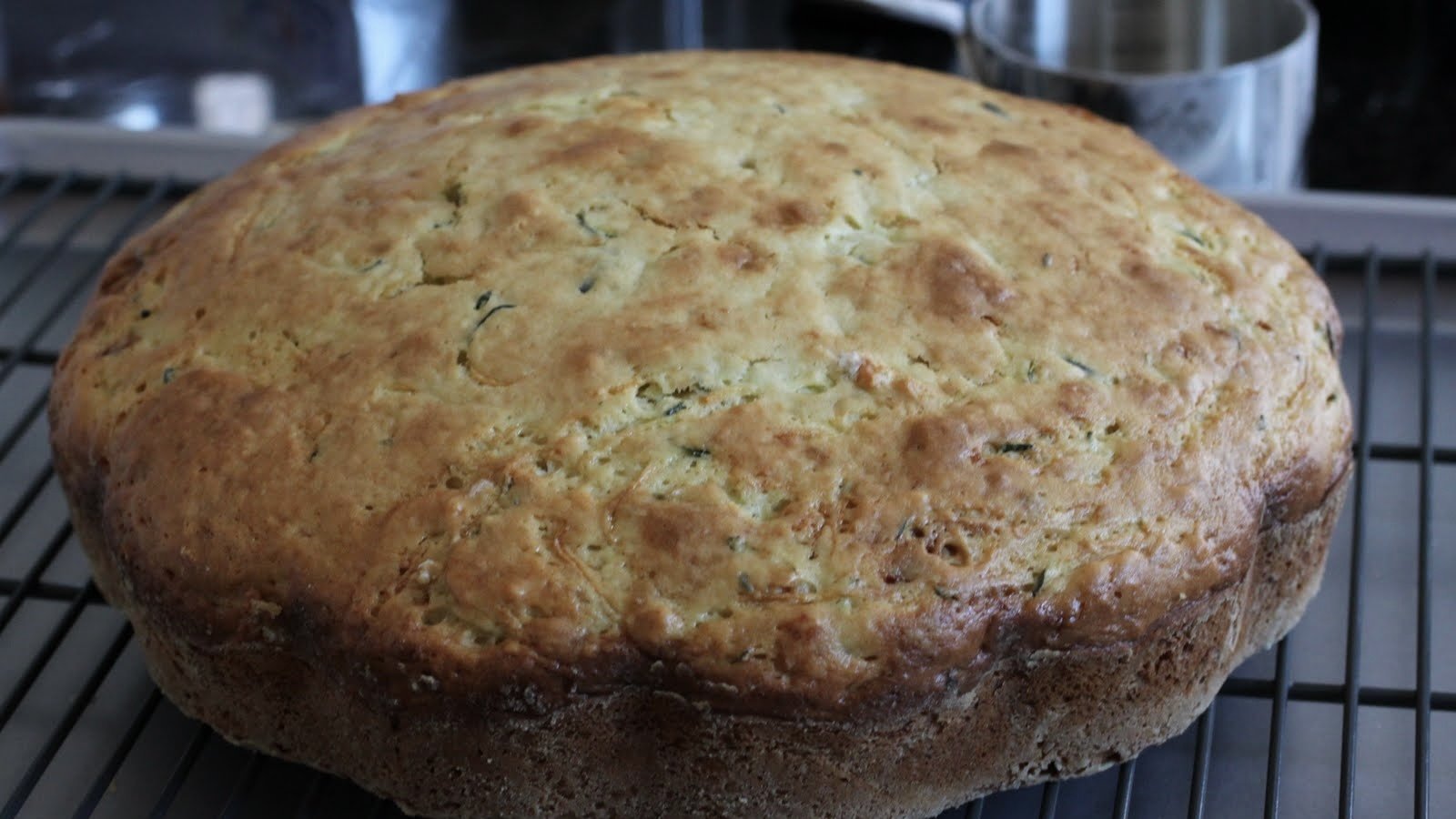THE SPRING FLING CAKE
The recipe follows a brief history of the cake, as well as some baking tips for Colorado’s elevation.
The (former) Market at Larimer Square’s Spring Fling Cake.
Early in the COVID-19 pandemic, a beloved Denver, Colo., institution, The Market in Larimer Square shuttered its tall windows for good.
And, with that, ceased baking its famed Spring Fling Cake.
What a cake. Preservationist Dana Crawford, The Market’s founder and first owner, remembers it as “Totally delicious,” she wrote in an email. “Thick, . . . its fruits “colorful and generous.”
The Spring Fling Cake begins as an egg, sugar and flour batter substantiated with shredded zucchini, and ends in flourishes of flung spring fruits such as strawberries. But use whatever fruits strike your fancy, “spring” always being somewhere on a globe easily accommodated to airplane holds, hence grocers.
GET COOKING WITH BILL ST JOHN tested and tweaked this recipe, which first appeared in 2006 in the also sadly departed Rocky Mountain News, It works—deliciously.
The Market’s former owner, Mark Greenberg, fashioned the Rocky Mountain News recipe for the home cook, so it calls for an everyday 10-inch cake round, although I did read online that others profitably have used muffin tins (“fill 3/4 full”), sheet pans, and scalloped ceramic for the same recipe.
The measurements and timing are for Denver’s elevation, 5,280 feet. Those living and baking higher or lower will require a consult with Chef Google. For my part, I removed the tins (I made two, in case one flopped; one flopped) when a long toothpick came out clean, at precisely 65 minutes.
Also, I partially peeled the zucchini and shred them by hand on the large holes of box grater, not using the food processor as Greenberg’s original recipe suggests (2 medium zukes equal about 2 and 1/2 cups shredded).
A serving of Spring Fling Cake.
RECIPE: Spring Fling Cake
From The Market, Larimer Square, recipe as published in Rocky Mountain News, May 10, 2006, courtesy the Denver Public Library City and County of Denver. Serves 12-14.
Ingredients
2 and 1/2 cups shredded zucchini
1 and 1/4 cups sugar
5 eggs
1/4 cup vegetable oil
1 cup sour cream
1/2 tablespoon plus 1/2 teaspoon vanilla extract (for frosting)
3 and 1/2 cups all-purpose flour
1/2 teaspoon baking soda
1/2 teaspoon baking powder
Pinch of salt
For frosting:
3/4 cup cream cheese
1/4 cup butter
2 cups powdered sugar
1/2 cup heavy cream
Fruit for cake:
1 pint strawberries, cleaned, stemmed and sliced
4 kiwi fruit, peeled and sliced
2 mangoes, peeled and sliced
1 pint blueberries
Apricot glaze, or apricot jelly thinned out with a bit of warm water, optional
Directions
Preheat oven to 350 degrees. Grease and flour a 10-inch cake pan.
To prepare the cake: Shred the zucchini in a food processor. In a large mixing bowl combine shredded zucchini, eggs, sugar, oil, sour cream and 1/2 tablespoon vanilla. When thoroughly mixed, combine all dry ingredients and add to bowl; mix well. Batter should be fairly wet and easy to pour.
Pour in the batter and bake for 50 to 70 minutes, testing with a toothpick in center. Cool the finished cake on a rack for 10 minutes, then remove it from the pan and allow it to cool completely. (You can make the cake a day ahead and refrigerate.)
To prepare frosting, whip room-temperature cream cheese and butter until smooth. Gradually add the powdered sugar, mixing until well combined. In a separate bowl, whip the cream until stiff, and then fold it and the 1/2 teaspoon vanilla into the frosting. Do not overmix.
To assemble cake: Cut the cooled cake in half lengthwise, making two layers. (The Market cuts the cake into three layers, which you may do if desired.) Spread an even layer of frosting over the first layer, and then add a layer of the various fruit pieces (repeat if three layers).
Put on the top layer of cake and evenly frost. The sides of the cake are not frosted; use extra to fill in, as needed. Arrange the fruit in circles all over the top of cake, slightly overlapping fruit pieces.
To finish: Spread the apricot glaze over fruit on top of the cake with a pastry brush.
Nutritional information per serving: 496 cal., 20 g fat (10 g sat.), 116 mg chol., 73 g carb., 597 mg sodium, 4 g fiber, 9 g protein
Wine Pairings and Why: Odd as it seems, sweet foods are the most difficult to pair with wine. Sweetness, as one or more sugars such as fructose or sucrose, combines with the majority of wines (themselves dry) to cause sensations on the tongue of bitterness, astringency and acidity. Drink a dry white Burgundy with vanilla ice cream and discover a terrible experience. But if you pair the level of sugar in the food with a corresponding (or slightly higher) level of sweetness in the wine, that works. A good example is pairing an apple tart with a medium-sweet muscat. But the overall guideline is that sweetness in food requires the same level of sweetness in wine. With some moderately sweet desserts, that wine would be a Moscato from Italy or this country or a Piedmontese Brachetto d’Acqui. With very sweet desserts, a Port, or a Bordeaux Sauternes, or even a Bual or Malmsey Madeira from Portugal.


